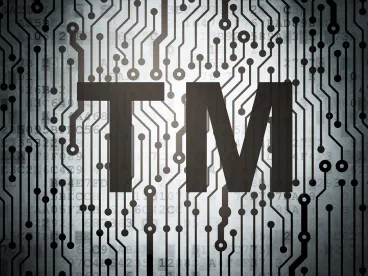Intellectual property owners need to add the metaverse to places to watch for possible infringement, specifically, trademark or copyright infringement in the form of NFTs or non-fungible tokens. This is highlighted in the case of Hermès International v. Mason Rothschild, currently pending in federal district court in New York. In this case, Hermès claims that NFTs called METABIRKINS—which allude to the Hermès iconic (and trademarked) BIRKIN® handbag—infringe and dilute Hermès trademarks.
NFTs are unique tokens based on blockchain technology and used as digital assets. Unlike cryptocurrency tokens such as Bitcoin, which are fungible, NFTs are digitally unique—no two NFTs are alike. NFTs can be based on three-dimensional items or artwork, or can be purely digital creations—for example, a collectable digital sneaker or a token used in a videogame. Most NFTs are protected under US Copyright Law as creative works and/or may be derivative works based on pre-existing copyright-protected works. NFTs also may embody or use trademarks. For a succinct background on NFTs, see Your NFT Playbook, by our colleagues Kyle Fath, Alan Friel, and Carlton Daniel, posted in Consumer Privacy World.
As artists, commentators, and parodists flock to this new medium, the headaches for intellectual property owners have multiplied. This is demonstrated by the Hermès case, which involves NFTs created by digital artist Mason Rothschild. The NFTs, which Rothschild dubbed METABIRKINS, are based on the Hermès BIRKIN® handbags—but sport furry surfaces rather than polished leather. Rothschild began selling his METABIRKINS NFTs in December 2021. His NFT sales have reportedly surpassed $1.1 million, with the most expensive METABIRKINS NFT selling for $45,100.
On January 14, 2022, Hermès filed a Complaint in the Southern District of New York alleging trademark and trade dress infringement, trademark dilution, false designation of origin, cybersquatting, injury to business reputation, and misappropriation, under the federal Lanham Act and New York state law. In addition to alleging trademark infringement due to Rothschild’s use of BIRKIN in METABIRKINS as the name for his NFT collection, Hermès complained that Rothschild infringed by using METABIRKINS as a domain name, as a handle on Twitter and other social media platforms, as a brand name on NFT sales platforms, and as a hashtag. Hermès also alleged infringement based on Rothschild’s posts and ads proclaiming “Not Your Mother’s Birkin” as well as the hashtag #notyourmothersbirkin.
On February 9, 2022, Rothschild filed a Motion to Dismiss the Hermès Complaint on the grounds that the METABIRKINS NFTs are artistic expression and commentary protected by the First Amendment, and that no one would be confused or think that Hermès sponsored or approved his hirsute images. His brief argued that the Hermès handbags and trademarks are not infringed because the NFTs are “depicted as fur covered …[which] comments on the animal cruelty inherent in Hermès manufacture of its ultra-expensive leather handbags.” The brief further argued that the term METABIRKINS refers both “to the context in which he makes the art available (i.e., the online, virtual environment popularly dubbed the ‘Metaverse’) and alludes to his artwork’s ‘meta’ commentary on the Birkin bag and the fashion industry more generally.”
Rather than oppose the Motion to Dismiss, Hermès opted to amend its complaint. The Amended Complaint, filed on March 2, 2022, provides additional background and context for Hermès’ claims. The Amended Complaint has 51 exhibits, many attesting to the fame and renown of the BIRKINS mark and trade dress. The Amended Complaint also adds detail about Rothschild’s sales plans and commercial endeavors, no doubt in order to undermine his defense of artistic commentary. The Amended Complaint emphasizes the growing importance of NFTs in the fashion and brand markets, and accuses Rothschild of usurping opportunities that rightfully belong to the brand owner, Hermès.
While the Hermès case is in its early stages, it highlights several critical points. First, NFT’s have enormous significance in the IP world. Although NFTs have been around since 2014, their far-reaching, multi-layered legal implications are just now being recognized. As evidenced by the METABIRKINS imbroglio, businesses and brand owners should be on high alert for use of their intellectual property, now that digital currency, blockchain, and NFTs are becoming more mainstream. Once again, technology has outstripped normal legal strictures, and the lawyers need to catch up.
Brand owners have already begun to catch up. As of March 12, 2022, the USPTO TESS Database contained 2551 trademark applications or registrations using NFT in the goods/services descriptions. Of those, only a handful have registered, but over 1400 of the applications had been filed since January 1, 2022. Those statistics show increasing awareness of the NFT market and likely some FOMO (or “Fear of Missing Out”) on the part of brand owners.
One thing is clear: NFTs are hot items in the branding world, with an enormous potential for infringement (or commentary) as well as brand extension. The news is replete with reports of brand owners—including McDonald’s, Crocs, and CVS—launching promotional NFT Drops or filing trademark applications covering NFTs.
Other brand owners have been fighting back infringers, commentators and/or parodists as in the METABIRKINS saga. For example, Darden Restaurants, owner of the OLIVE GARDEN brand, has reportedly been battling “Non-Fungible Olive Gardens”—NFTs which depict real-world Olive Garden restaurants with digital tokens called Breadsticks.
And in February 2022, Nike, Inc. filed a lawsuit in federal court in New York against online retailer StockX. The complaint asserts trademark infringement, misrepresentation and unfair competition due to StockX’s minting of sneaker-related NFT’s using NIKE trademarks without Nike’s authorization. StockX responded that its NFTs are permissible trademark “fair use” as part of its retail sales and advertising of authentic NIKE sneakers. These challenges show that brand owners face new and multi-dimensional legal issues in the metaverse frontier.
For now, here are some thoughts for addressing these IP issues in the ever-expanding metaverse:
-
Consider whether the metaverse should be on your company’s horizon. If yes, and plans are in the works, consider filing US trademark applications on an intent-to-use basis to stake out your claim and prevent surprises.
-
The USPTO trademark review process currently takes one to three years after an application is filed, so companies should have plenty of time to solidify their launch plans. After a successful review, a notice of allowance is issued for trademark applications based on intent to use (rather than actual use). At that point, US trademark applicants have an additional 3 years to begin using the mark in US commerce.
-
Also consider international markets. While NFT-related marks are clearly protected under US law, the laws of other countries might differ. So map out your company’s potential markets around the globe and develop a protection plan for other markets.
-
Do your due diligence of the metaverse before entering it: Determine what rights buyers/licensees will have in the NFTs, compare marketplace platforms and the underlying contracts and rights – including “smart contracts” providing for re-sale royalties for artists and other NFT creators.
-
Make sure all intellectual property rights are protected before releasing your NFTs into the metaverse.
-
Market leaders cannot protect themselves from all knock-offs or commentary. However, taking protective measures and planning now for new markets as well as enforcement programs can give brand owners an advantage and help to protect trademarks from being hijacked when new markets develop.
The metaverse is here to stay, and brand owners need to pay attention to this new frontier. So from our perspective, NFTs stands not only for “non-fungible tokens” but also “New Frontiers for Trademarks.”





 />i
/>i
